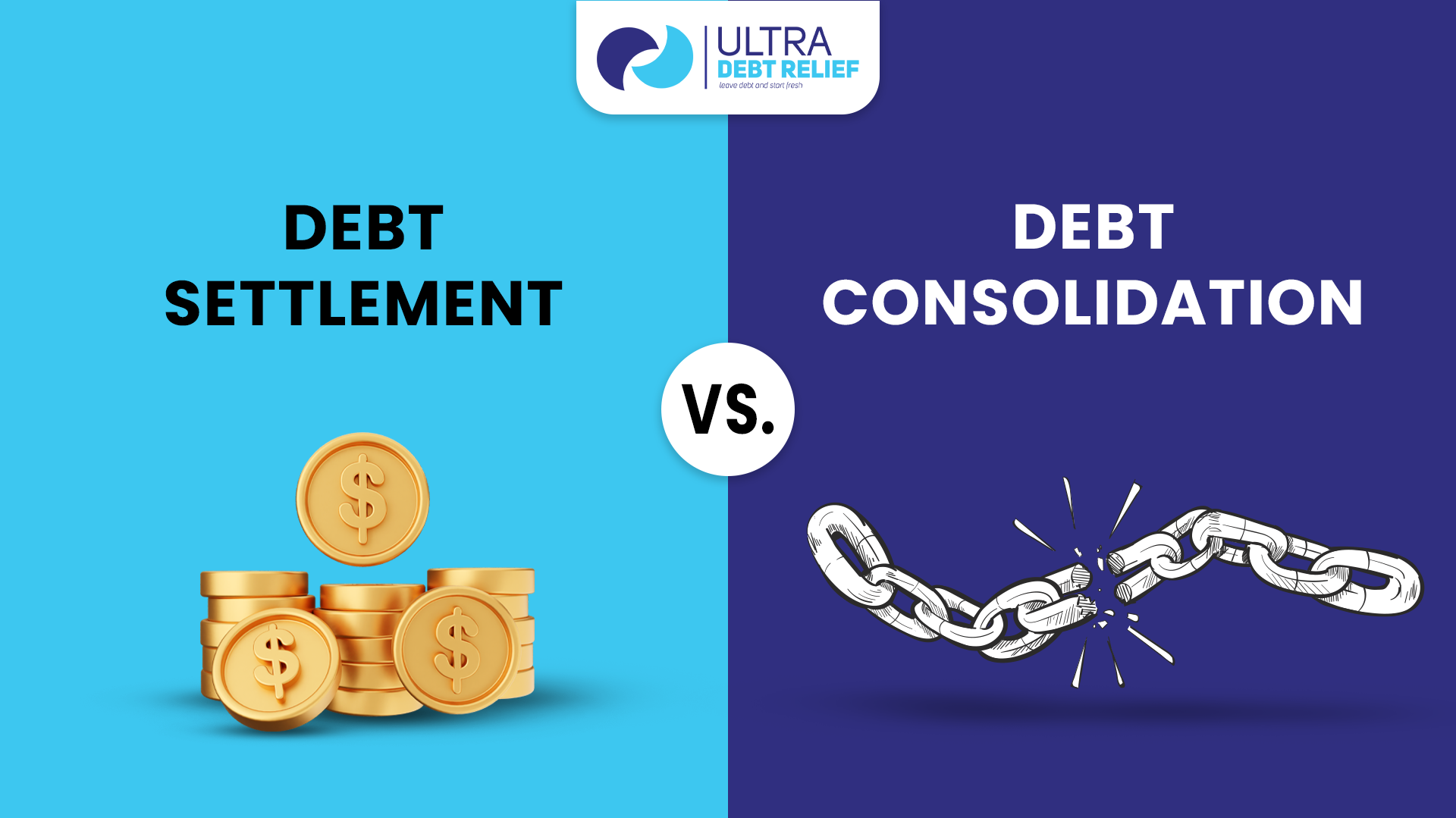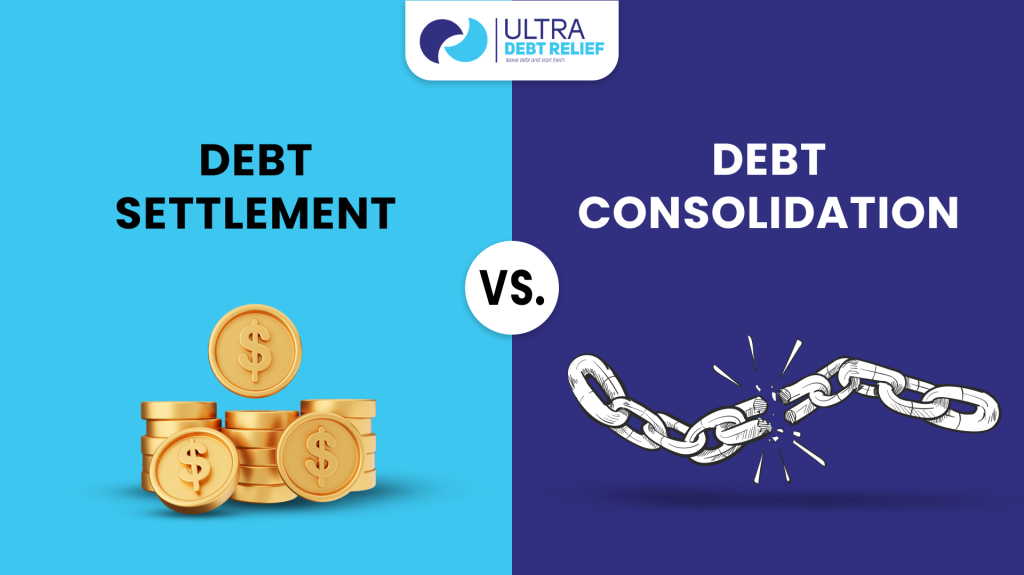Debt Settlement vs Consolidation is like an anchor that saddles your finances and your psyche. If you’ve ever grappled with just making minimum payments—or that you’ll be stuck forever and won’t reach the end of this tunnel—you’ve likely been offered two of the most well-known debt relief methods: debt Settlement vs Consolidation.
They appear to be similar on the surface since they have the same destination in mind: debt freedom. But it comes with a twist—they operate so differently from each other, having different strengths and weaknesses, and long-term effects on your finances.
✅ The correct one will get you out of trouble faster.
❌ The wrong one will keep you stuck for decades.
This guide lays out both processes in plain English so that you can select an appropriate path in your circumstance.
Part 1: Debt Consolidation – The Restructuring Approach
debt Consolidating is like cleaning up and organizing your financial chaos. You’re no longer juggling many bills, rates of interest, and collection dates, but instead you combine all of those into a quick-to-understand monthly payment.
It won’t reduce the total amount you owe, but it can simplify things and potentially save you money on interest.

So, what is debt consolidation?
In short: you take out a new loan (or use another financial tool) to merge your existing debts like credit cards, medical bills, or personal loans into one. Afterward, you only deal with one payment, one interest rate, and one timeline.
Common Debt Consolidation Options:
- Personal Loan (Debt Consolidation Loan)
- You borrow a lump sum from a bank, credit union, or online lender.
- Ideally, the interest rate is lower than your current debts.
- Bonus: You know exactly when you’ll be debt-free since personal loans have fixed repayment terms.
- Balance Transfer Credit Card
- You shift your high-interest balances to a card with a 0% introductory APR (typically lasting 12–21 months).
- During this period, payments go directly toward the principal.
- Caution: Once the promo ends, rates can skyrocket. Plus, transfers usually carry a 3–5% fee.
- Home Equity Loan or HELOC
- Homeowners can borrow against their equity to pay off unsecured debt.
- These loans often have lower rates, but the risk is massive—you’re putting your home on the line. Default could lead to foreclosure.
Pros of Debt Consolidation:
- Simplifies bills: one payment instead of many.
- Lower interest rates mean more of your money goes toward the balance.
- Fixed timeline: you’ll know exactly when you’ll be debt-free.
- Minimal credit impact (aside from a small dip during the credit check).
Cons of Debt Consolidation:
- Requires good credit (typically 670+ for the best terms).
- Doesn’t reduce your total debt—it just restructures it.
- Fees (origination or transfer) can cut into your savings.
- Risk of overspending: paying off cards may tempt you to use them again.
Part 2: Debt Settlement – The Negotiating Technique
Debt settlement takes the opposite route. Instead of restructuring, you attempt to reduce the amount you owe.
This option is usually for people in severe financial hardship—when even minimum payments are no longer realistic.

So, what is debt settlement?
It’s when you (or a company representing you) negotiate with creditors to accept less than the total balance. For example, if you owe $10,000, your creditor might settle for $5,000 as a lump sum.
Why would they agree? Simple: if bankruptcy seems likely, they’d prefer to recover part of the debt rather than nothing at all.
How the Process Works:
- Stop Payments: Most settlement programs require you to stop paying creditors, which pressures them into negotiating.
- Open a Savings Account: Instead of paying creditors, you deposit money monthly into an account managed by the settlement company.
- Negotiation Stage: Once you’ve saved 40–50% of what you owe, the company negotiates deals with your creditors.
- Lump-Sum Payment: Your saved funds (minus company fees) are paid to creditors in one settlement payment.
Advantages of Debt Settlement:
- Reduces the principal balance, unlike consolidation.
- Can help you avoid bankruptcy.
- Often clears debt in 2–4 years instead of decades.
Disadvantages of Debt Settlement:
- Hurts your credit score (missed payments do the damage).
- No guarantee creditors will agree.
- High fees (15–25% of enrolled debt).
- Tax consequences: forgiven debt may be treated as taxable income.
Which Route is Right for You?
Here’s a quick breakdown:
- Choose Debt Consolidation if…
You have good credit, steady income, and mainly need lower payments and simplified management. - Choose Debt Settlement if…
You’re already behind, overwhelmed, and need your balance reduced to stand a chance.
Both methods can relieve the pressure, but the right choice depends on your personal situation.
If you’re unsure, don’t guess. Speak with a debt relief professional who can review your income, debt level, and credit history to guide you to the best option.
Final Word
Debt doesn’t have to define your future. Whether you consolidate or settle, the most important step is the first one: taking action.



